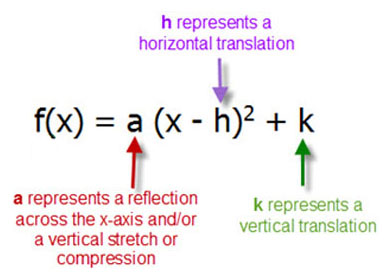
Transformations of the graphs of quadratic functions can be shifted left or right, up or down, and can be stretched or compressed. In this resource, we will extend this concept to include applied and purely mathematical situations involving the same function y = a(x – h)2 + k. You will describe and predict the effects of changes in a, h, and k on the graph of the function as you did previously.
Here’s a quick representation of the translation that each of the variables a, h, and k represent.

In the next sections, we will look at specific real world examples that we can apply quadratic transformations. No matter what mathematical situation you work with, the rules of quadratic transformations are the same.